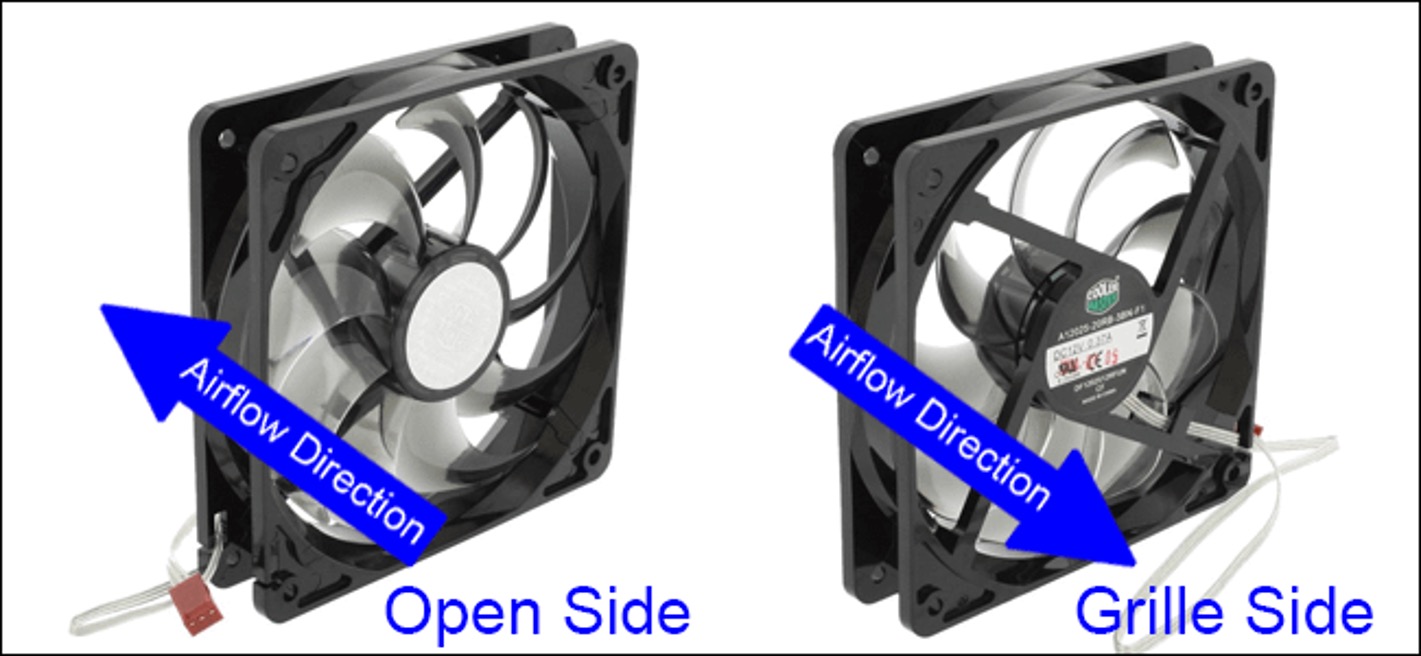One key element of an efficient cooling system is the direction of airflow generated by case fans.
They work by creating airflow, which helps to regulate the temperature inside the case.
However, not allcase fans blow air in the same direction.

In this article, we will explore various methods to determine the airflow direction of case fans.
Why is airflow direction important?
When the airflow direction is incorrect, it can lead to several problems.
Positive air pressure happens when more air is being brought into the case than expelled.
Proper airflow direction also aids in efficiently directing the airflow over critical components, such as theCPU and GPU.
Overall, the correct airflow direction is vital for system stability, component longevity, and optimal performance.
How do case fans work?
The basic principle behind the operation of case fans is simple.
They consist of a rotating hub with blades attached to it.
The hub is connected to a motor that spins the blades at a high speed, creating airflow.
The power is supplied through the connector, allowing the fan motor to spin the blades.
The size of case fans varies, with common sizes being 80mm, 120mm, and 140mm.
Larger fans generally provide higher airflow rates while operating at lower speeds, resulting in quieter operation.
However, the suitability of each fan size depends on individual case specifications and cooling requirements.
By strategically positioning case fans inside the case, you’re free to establish an effective airflow pattern.
Overall, case fans play a crucial role in maintaining the temperature equilibrium within a computer system.
Is there a standard airflow direction for case fans?
Traditionally, case fans are categorized into two types: intake fans and exhaust fans.
The manufacturer often indicates the intended airflow direction in the fans product description or user manual.
The blades are shaped to push air in a specific direction.
This indicates the direction of the airflow, either as an intake or exhaust fan.
This can help you determine whether the fan is set up as an intake or exhaust fan.
Alternatively, you could use a smoke source or tissue paper to visualize the airflow direction.
Here are some ways to determine the airflow direction of a case fan:
1.
These specifications are usually available on the product packaging, the manufacturers website, or the user manual.
Look for specific information or labels indicating whether the fan is an intake or exhaust fan.
Observing the fan blades:Another method is to closely inspect the fan blades.
The curvature and shape of the blades can provide clues about the direction of airflow.
This indicates whether the fan is set up as an intake or exhaust fan.
Hold the smoke source or tissue paper near the fan and observe how the air moves in response.
Remember to consult the manufacturers specifications whenever possible to obtain accurate information about the fans airflow direction.
When inspecting the manufacturers specifications, pay attention to any additional details provided.
This information can help you make informed decisions when positioning the fan within your case for optimal cooling.
When examining the fan blades, pay attention to their curvature and angle.
Study the shape of the blades and look for any asymmetry or noticeable features.
This indicates the direction of the airflow.
To feel the airflow, place your hand near the fan while it is in operation.
Pay attention to the direction in which the air is moving in relation to your hand.
In this case, the fan is drawing cool air into the case.
Feeling the airflow offers a straightforward and intuitive way to ascertain the airflow direction of a case fan.
Heres how you could proceed:
1.
Using smoke:Light the incense or matchstick and hold it near the fan.
Using tissue paper:Tear a small piece of lightweight tissue paper and hold it near the fan blades.
Observe how the paper reacts to the airflow.
1.Intake fans:Intake fans are designed to draw cool air into the case.
2.Exhaust fans:Exhaust fans are responsible for expelling hot air from the case.
This configuration enhances the overall cooling efficiency and promotes better airflow throughout the case.
The airflow direction for these fans depends on the specific setup and the design of the cooling solution.
In this article, we explored various methods to determine the airflow direction of case fans.
Checking the manufacturers specifications provides accurate information and is the most reliable method when available.
Intake fans bring in cool air, while exhaust fans expel hot air.
Combining intake and exhaust fans in a push-pull configuration helps establish a continuous airflow pattern.
Additionally, fan configurations in liquid cooling systems depend on the design and setup of the cooling solution.
Achieving the right airflow direction is a key aspect of maintaining a well-cooled and efficient computer system.